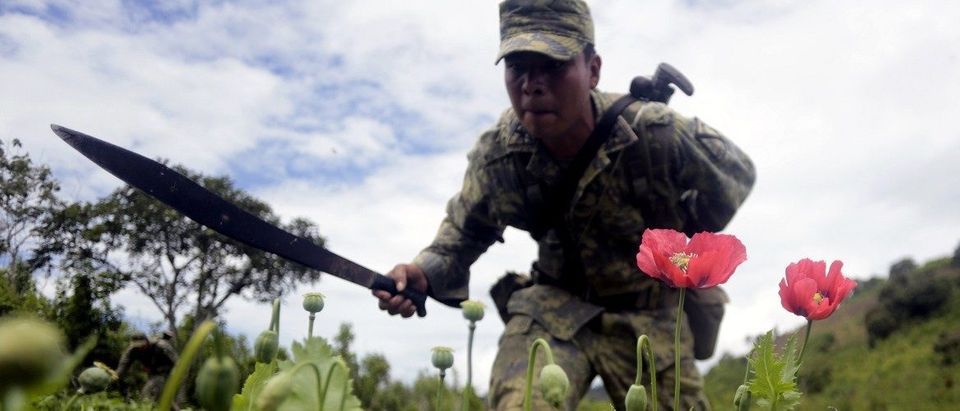Fentanyl, the extremely potent opioid that Prince overdosed on, has now become a linchpin of drug cartels across Mexico due to its extreme profitability, The New York Times reports.
The United States has an insatiable demand for opioids in the 21st century, including heroin, oxycontin and other prescription drugs, with unintentional overdose deaths quadrupling since 1999.
“However, what makes fentanyl more dangerous than typical opioids is its potency. It is 50 times more potent than heroin and 100 more than morphine and is highly addictive. It is not like any other drug — it crosses the blood-brain barrier more quickly and has a very rapid onset of action, making it more prone to habit forming and more prone to abuse than other prescription opioids,” said Dr. Caleb Alexander, co-director of the Johns Hopkins Center for Drug Safety and Effectiveness.
Originally created as a painkiller for cancer patients, the drug is now being manufactured in a synthetic form, instead of a purer pharmaceutical form, in Mexican drug labs.
Primarily sourced from Mexico, the synthetic version of fentanyl is trafficked across the U.S. border. It is often mixed with heroin and distributed in local American drug markets, making it even more insidious because many heroin users are unaware of the presence of the highly fatal fentanyl in their drugs.
Manufacturing fentanyl synthetically is much more inexpensive and efficient than having to find and grow opium poppies to produce the drug. Because of the drug’s potency, only a few micrograms — which, if ingested purely, would result in death — are needed turn a profit on the market. According to The New York Times, one pure gram of fentanyl can be diluted and cut with other agents to produce 16 to 24 kilograms of product.
The cut product will sell on the market at a much more expensive price than it was originally purchased for, which translates into exponential profits for the drug cartels producing and trafficking the drug.
Federal drug agents have reported that Mexican cartels are ramping up production of synthetic fentanyl in hidden drug labs. In the past two years alone, the DEA has documented a significantly sharp reappearance of fentanyl and fentanyl-related drug seizures.
This kind of in-house production is especially hazardous, due its experimental and clandestine nature. The last time there a surge in fentanyl use, and resulting overdose, occurred was in 2006.
Every drug that had traces of fentanyl and resulted in the 2006 overdose was traced back to a singular laboratory in Toluca, Mexico.
When a high-profile celebrity overdoses, it is almost akin to free advertising for the product.
“It is really the next migration of the cartels in terms of making profit,” said Jack Riley, acting deputy administrator of the DEA, told the Times. “This goes to the heart of the marketing genius of the cartels. They saw this coming.”
Melvin Patterson, staff coordinator at the DEA headquarters, says that despite the recent uptick, fentanyl abuse “was happening even before Prince’s death.” The DEA is trying to be proactive in its approach to a potential uptick in fentanyl-related overdoses, working with local governing agencies and local Mexican governmental agencies as educating and informing law enforcement officers and the public.
While there is an antidote to fentanyl, called naloxone, it is useless in the case of overdose. “Once you overdose, the horse is already out of the barn,” Dr. Alexander said.
Part of the root of the opioid abuse problem in general is due to the overprescription of opioid painkillers in clinical practice. “Once someone is taken off a prescription, they may seek synthetic fentanyl on the streets because they have become addicted to prescription opioids. In order to fix our opioid abuse problem, we need to identify the abusers, help them and get them into treatment,” said Alexander.


